I recently started an altered book project that will serve as a journal of my recollected childhood memories. I’m going to show you how I prep my pages and I invite you to play along with me by altering a book of your own. If you’ve never altered a book before, I promise you, it’s very easy, and more importantly, incredibly fun.
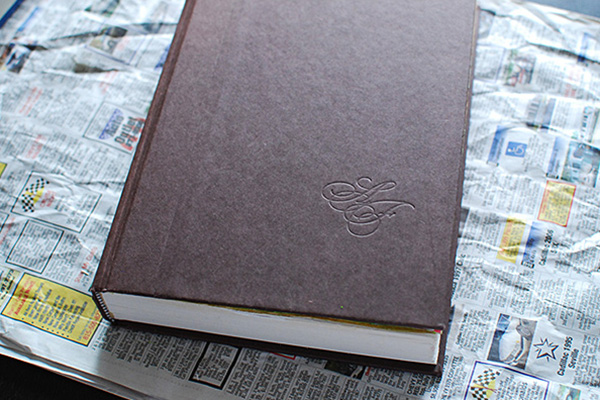
This is the book I’m using. I bought it at the library for 25¢. Check your public library. It’s a great resource for acquiring old, used, hardbound books. In my local library, they’re 25¢ or 5 for $1. I haven’t done anything to the cover yet but I do have some ideas on how I’m going to transform the cover. I’m just pumped to fill up the pages so I’m going to wait a while before I work on the cover.
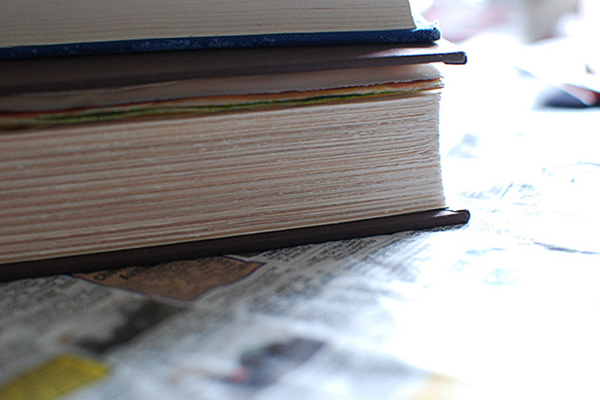
When choosing a book to alter, there are a few things I consider. I make sure the condition and material of the cover is something I can work with. I check the size and weight of the book, and make sure I like how it feels in my hands. I also check the texture and thickness of the pages, and like the cover, I make sure they are pages I’d be happy to work on. I love how this book has a deckled edge, giving the book a handmade feel.
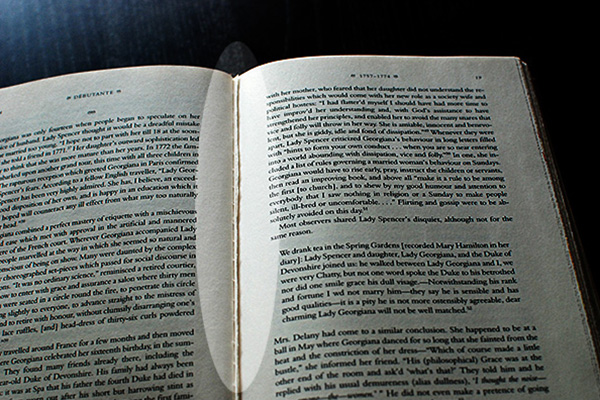
I glue every two pages together to make my pages thicker. And for every two pages that I glue, I tear out a page or two in between the two glued pages to compensate for the layers of photos, paints, and textures I’ll be adding to the pages. I hold a ruler by its edge along the spine while I tear out the pages to help keep the spine intact.
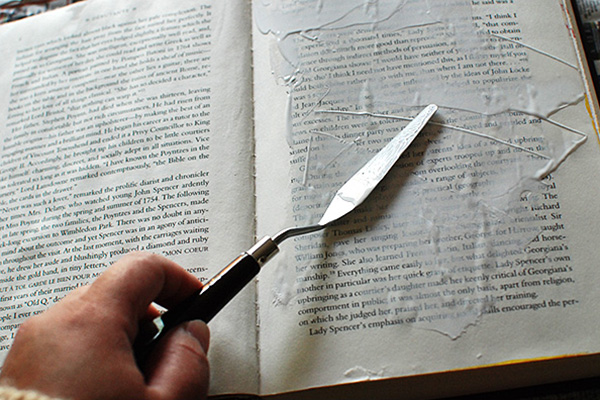
After my pages are glued, I’m ready for gesso. Gesso is a primer for painting. It resembles paint but is thinner and dries hard – making the pages stiffer. I use a palette knife to apply gesso to my pages. You can use a brush instead of a palette knife but I find that a palette knife keeps the surface smooth enough to write on while still leaving subtle textures on the pages. I’ll be doing a lot of writing so a smooth surface that won’t make my pen skip is very important.
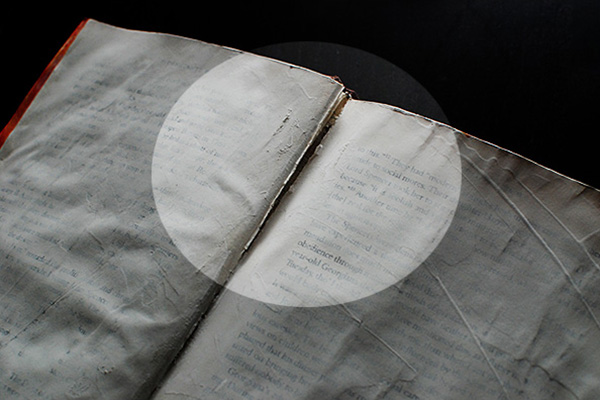
I’m not worried if my pages do break away from the spine. I just restore the pages with a masking tape. Then I can treat the masking tape as another ‘layer’ on my page.
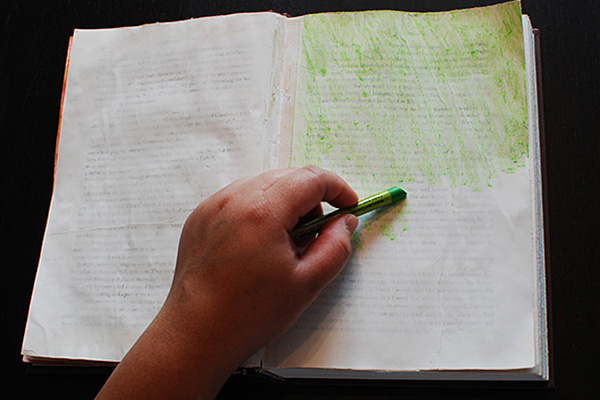
After the gesso dries, I create a simple background for my pages. First I color the entire page using watercolor crayon – a special type of crayon that is water-soluble. You can see on this page spread that gesso doesn’t completely cover the text of the book, which I like because the exposed text gives another ‘layer’ to the page.
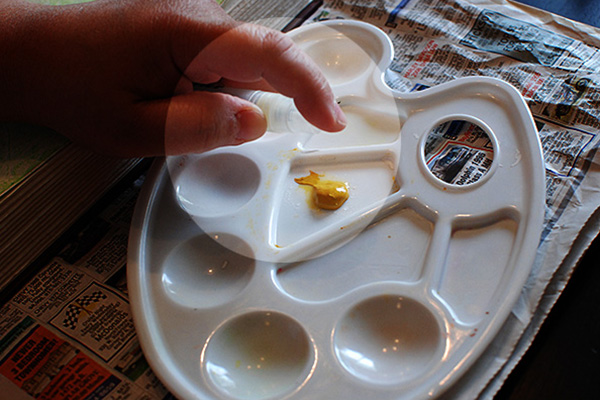
After coloring the entire page with watercolor crayon, I squeeze some acrylic paint on a palette and spritz it with water to thin out the paint a little bit. I use a mini spray bottle (the one I have is called Mini Mister) to control the water I add to the paint because I don’t want to accidentally drown the paint with water.
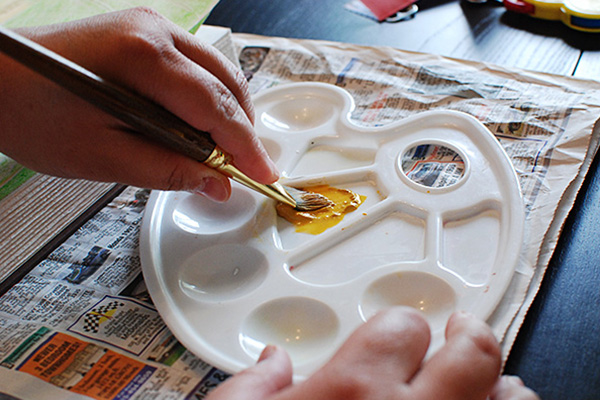
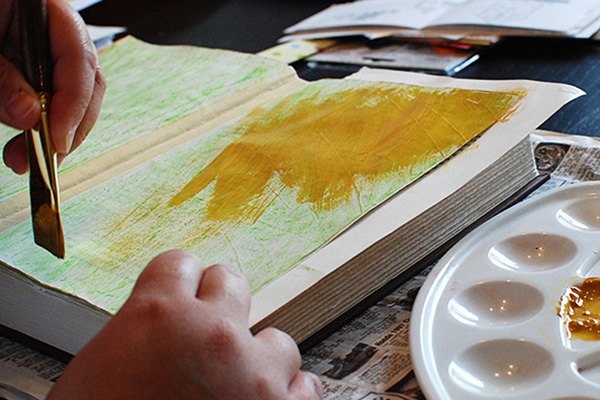
I use a 3/4″ angle brush to apply the acrylic paint to the pages. While I’m painting, I spritz more water to the pages. This helps blend the crayon and paint and leaves a spattered effect on the pages.
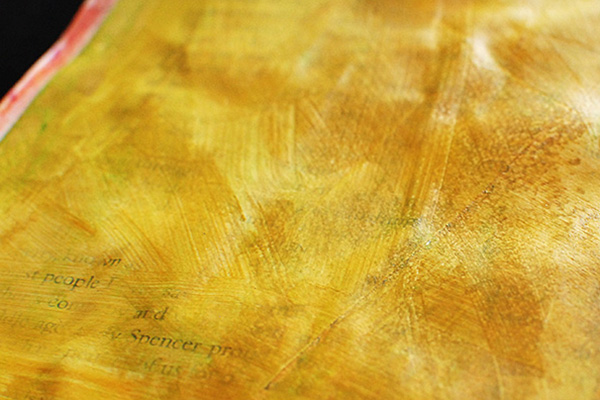
This is the finished background page. It’s very simple because I know I can add more to it as I fill up the pages.
 |
Totally love your creativity!
Thanks Kiki! Why don’t you play with me? *wink Go grab yourself an old book! :D
Thank you for the tips for preparing the pages on the books.
Will you be continuing with your book and more art? This was great, I hope to learn more, Thank You
Thank you Jackie! Yes, I plan on posting more! :)
Thanks for this… good to know for someone just getting ready to try this for the first time.
I love your tutorial. I am going to do art journaling with my students this year and your tutorial is exactly the information I was looking for.
What do you use to glue the pages together?
That is a really awesome tutorial!! thank you so much!!!
I just came across these instructions on Pinterest. Thanks for sharing! I’ve been struggling with how to start my altered journal. I have tons of items ready to go, but just taking that first step was stumping me. Now I’m ready to go! Thank again.
I used a old Atlas and the pages were thick enoughbut I did not have to double the pages just use gesso and it worked just fine it turned out wonderful
Thank you SO much for this tutorial. I just got a book to turn into an art journal, and after I got it home I started doubting whether I’d picked the right one. I was worried the pages wouldn’t hold up, worried the book would fall apart, worried I’d made a huge mistake. After seeing you use gesso and embrace taping pages back in if they fall out I feel so much better. It made me fall in love with my book all over again.
I found your instructions through Pinterest. I just bought a vintage french accounting journal that I love. I’m going to use it to make a journal of faces in order to practice painting faces. I was afraid to get started and not sure what to do. Now I know! Thanks!
My gesso’ed pages like to stick together and I’m trying to figure out how to remedy this. What kind of gesso do you use? Should I be thinning mine?
I started with the cheap gesso you can buy at a hobby store – which I really didn’t have any problems with. Then a lot of people were raving about the Golden brand, so I tried it and I must say, I don’t think I’ll ever use anything else. For journals, I don’t put on a heavy coat of gesso. I think it out with a watered brush or a spritz of water. So far, I don’t have any problems with my pages sticking because of gesso. I even gesso multiple pages at a time – I just put a sheet of wax paper in between the pages so the pages won’t stick together when they’re not completely dry yet. I hope this helps.
I’m wanting to try this but have read that it should be a book that has a sewn in binder as opposed to glued in pages. Is this the case?
fantastic!
I love books and I am an art teacher!
Can’t wait to do this!
Thank you so much for sharing. This is the exact tutorial I need. I want to start art journaling using an old book and I didn’t know how to prepare it with the thin pages.
Before you tear up an old book check its price on ABEBooks.com and Alibris. I have often gotten books in thrift shops, books sales and libraries worth hundreds of dollars — recently a two volume set on Mongolia that was worth about $900.
Not only are these books monetarily valuable, but they are also rare (though they have often been reprinted), so it would be a shame to destroy them when so many others are available.
Awesome idea, thanks a mil. Definitely gonna play with this idea!
i consider this tut very very useful. Will start choosing my books, ’cause will be following you¡. Thanks for showing…
Thank you so much-needed ????????
Hi can I use white acrylic paint instead of gesso? Thanks.
I found my way here from Pinterest, and I’ve seen other examples of this same thing. Your tips about painting and gesso-ing are excellent. I’m sure you have been doing this for a long time, but if you acquire older books that actually have sewn signatures of pages, rather than the new format, you wont ever have to worry about the spine breaking away, because you pull the pages out of signatures from behind the same binding thread!
Just a little tip for you. And many of those older books have much thicker pages too!
Thanks!!! I’m totally inspired now. I’ve been through some major disasters lately, fires, flooded apt, purse theft, loss of photo albums, major moves, and layoffs. I am going to go through my trash and dig out a burned Chinese calendar to use on some pages and hit the thrift store to find the perfect book to get started!!!
U star. It all makes sense and even bonding with a book is given equal importance.
Thank you for taking the time to share this x
Wonderful post! I would have oreferred to see the final result of a project though. Thanks ????